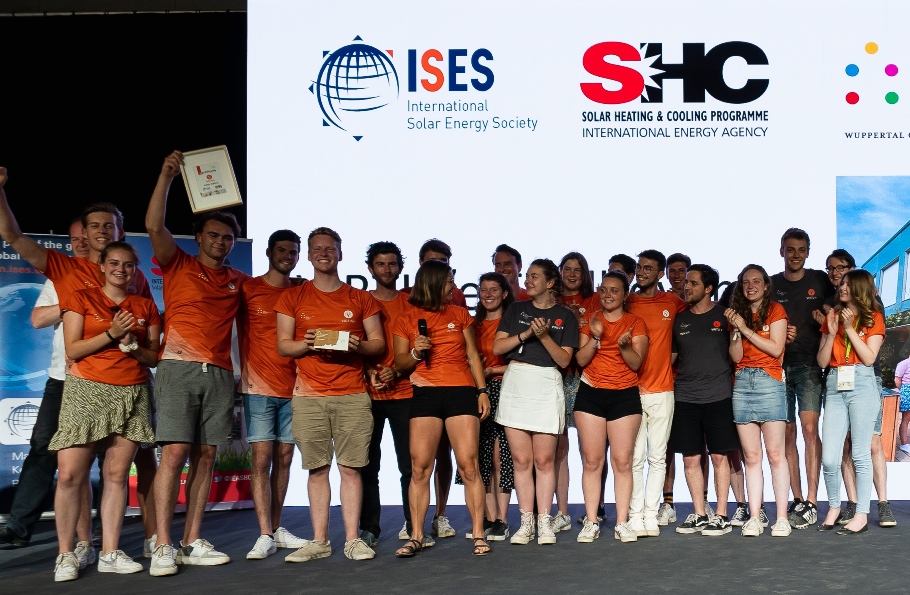
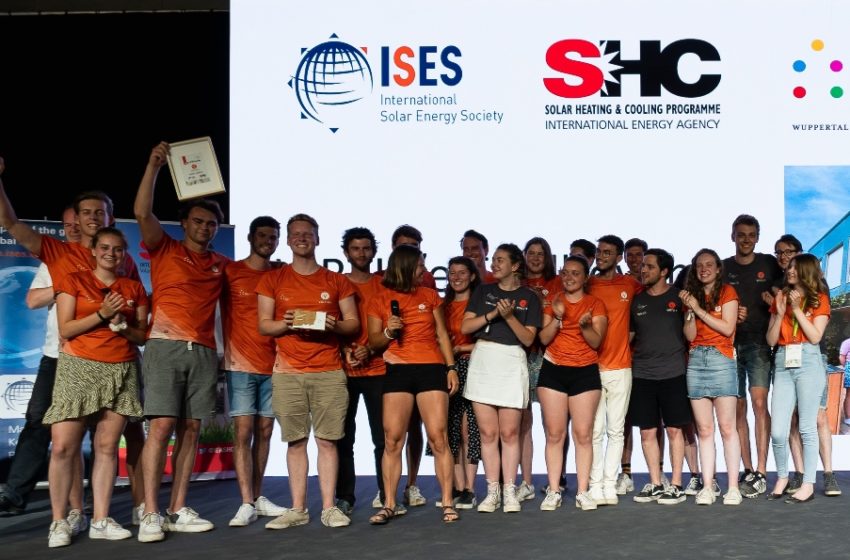
Solar Award recognises outstanding solar building concepts
On 16 June in Wuppertal, Germany, two very convincing and transferable solar integration concepts realised in Solar Decathlon Europe buildings received the Solar Award. The first solar prize went to the team VIRTUe of the Eindhoven University of Technology in the Netherlands (see photo) and the second solar prize was received by the LOCAL+ students group of the University of Applied Sciences Aachen in Germany. The awarding institutions were the IEA Solar Heating and Cooling (IEA SHC) Programme together with the International Solar Energy Society. Solar Decathlon Europe is the world’s largest construction competition for universities. 18 teams from 10 countries competed for 21 awards.
Photos (4): SDE 21-22
“We were really impressed by the well-thought-out technology concepts, but also by the team spirit that we saw. In both teams we were welcomed by really professional guides showing us around their projects,” said Andreas Häberle from IEA SHC, praising the teams in his speech.
The Solar Award recognises the Solar Decathlon teams with the most convincing and transferable technical integration and significant CO2 reduction achieved by on-site solar energy use covering the space heating and hot water demand of the building.
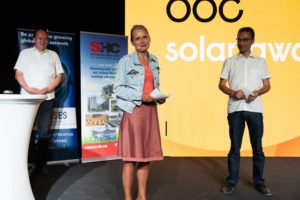
The Solar Award jury (from left): ISES President Prof. Klaus Vajen from the University of Kassel, Kerstin Krüger, Vice-Chair of the IEA SHC Programme and Prof. Andreas Häberle, head of the SPF Institute for Solar Technology in Rapperswil, Switzerland.
The Solar Award jury visited all 16 full-scale (1:1) flagship buildings for sustainable urban living built in Wuppertal. “What we saw during our tour was that many teams used coloured PV and PVT elements in the façade or on the roof combined with heat pumps. But some teams developed special solutions for distribution of the heat in the building and increasing the solar share, also for heating demand in winter”, said Häberle.
The jury lauded the overall energy concept of the winning team VIRTUe, which followed three objectives:
- Reducing energy demand with a highly insulated and air-tight building envelope and a heat-recovery ventilation & showering system
- Decarbonising the energy supply using on-site solar electricity and heat production combined with a brine heat pump
- Matching demand and supply with the help of thermal and electric storage which are managed by a smart home and energy management system.
A special feature of the VIRTUe building is the distribution of heat and cold via the floor, where phase-change material elements are integrated in order to achieve a higher thermal mass. Häberle also emphasised the fact that the team includes only students, also for the management, and they even brought their own power container with PV modules and 120 kWh battery for the two-week construction period, so that they did not need a power connection on site.

The wood-based building of the VIRTUe team from the Netherlands can be used to add additional floor space to existing buildings. The roof is walkable and includes a PVT-field plus a solar collector that is linked to the underfloor heating and cooling system of the house. Figures: VIRTUe / Photo: IEA SHC
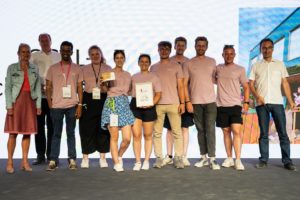
Winner of the second prize of the Solar Award: LOCAL+ Team from the Aachen University of Applied Sciences together with the jury
The LOCAL+ Team from Aachen also convinced the jury with its overall energy supply concept. A PVT field on the roof provides heat and electricity for a brine heat pump. The special features here are an ice storage that can be regenerated by thermal energy from the PVT elements and distribution of heat and cooling via ceiling elements made from clay, which is a 100 % recyclable material. Häberle also lauded the team spirit of LOCAL+. They suffered from severe storm damage during the construction period, but the team still managed to completely finish the house.
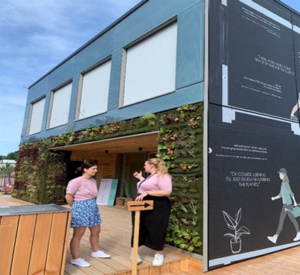
The energy concept of the LOCAL+ team from the University of Applied Sciences in Aachen, Germany, uses façade-integrated PV elements (blue on the photo). These are colour-coordinated with the other building materials to increase the acceptance of onsite energy production.
Photo: IEA SHC
Organisations mentioned in this newsletter:
IEA SHC Program
International Solar Energy Society
Solar Decathlon Europe